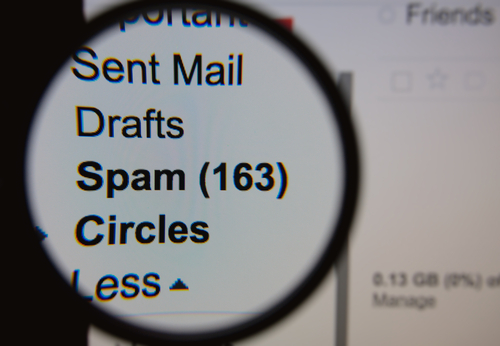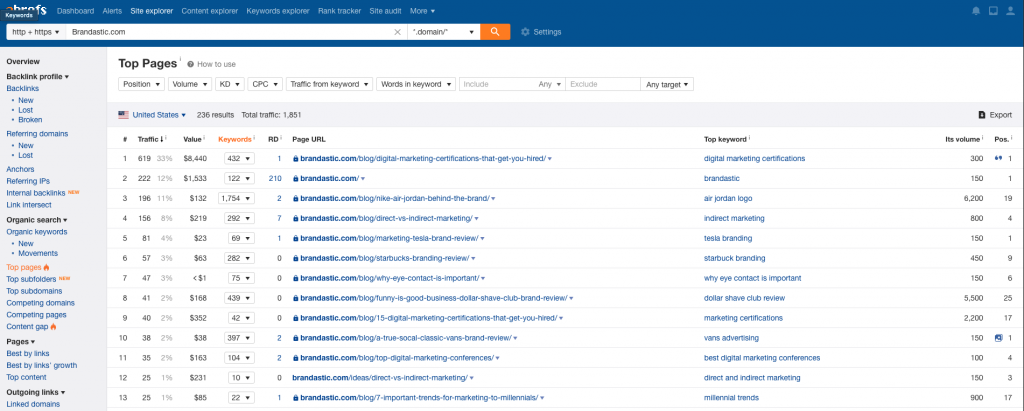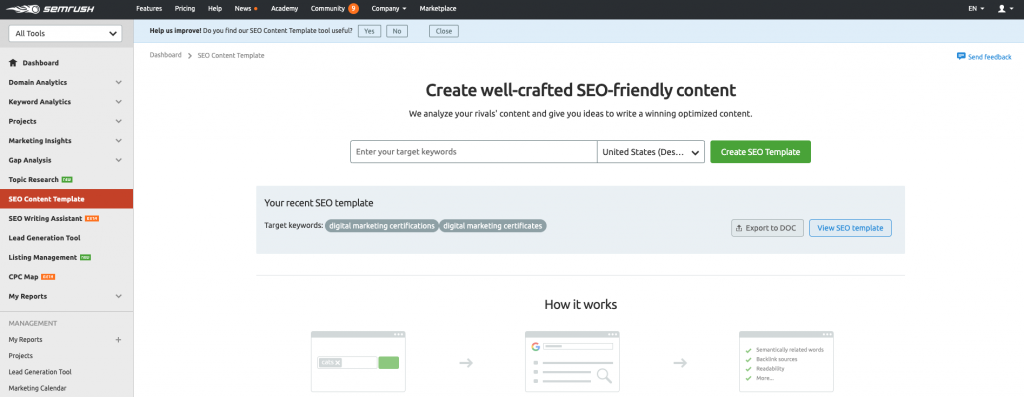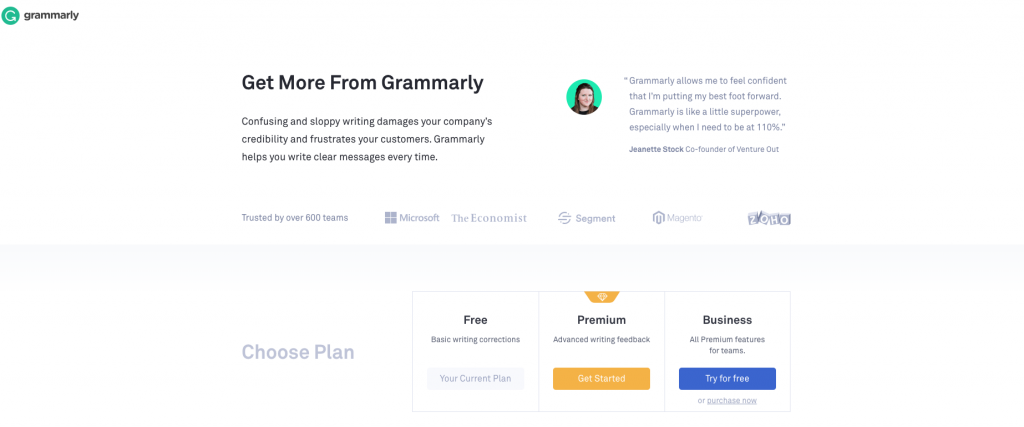Thin content is one of the initial issues Google tackled with its 2011 Panda algorithm update. “Content is king” is still the most cliche term in digital marketing, but there’s a reason we’re still talking about it. If your brand doesn’t publish any original material, it’ll be impossible to break into valuable SERP’s for valuable keywords.
Learn about the aspects of your site at risk for thin content and find out how to address the root problem.
What is Thin Content?
According to Google, thin content is content that provides “little or no added value.” Low quality work includes pages with duplicate content, affiliate generated content, automatically generated content, scraped content, and doorway pages. Work that falls under these categories will struggle to rank, and can also result in a violation of Google Webmaster Guidelines.
If your work falls under any of the above categories, it’s time to ramp up your efforts with better topic ideas and keyword research. Luckily, tools like ahrefs and Semrush exist to help you brainstorm and optimize content ideas.
Valuable Content is King
The key to getting ranked in Google is to write something valuable and relevant to your audience. Your content needs to answer user queries and help your audience. Stay away from content that’s thin, short, or doesn’t match the meta title and description fields.
Check out this vintage video from Google’s former head of webspam, Matt Cutts as he defines thin content.
At the end of the day, Google wants to keep its users happy. The search algorithm is smart and the most important thing is whether or not your content helps customers find the information they need.
How To Find Valuable Content Ideas
Mark Twain once stated:
“There is no such thing as a new idea. It is impossible. We simply take a lot of old ideas and put them into a sort of mental kaleidoscope. We give them a turn and they make new and curious combinations.”
According to Statista, there are over 4 million blogs posted on the web every single day! With those odds, that revolutionary content idea you just came up with already exists. Look toward successful blogs for ideas and inspiration, but it’s more important to form your own voice.
When it comes to writing for SEO, you don’t have to reinvent the wheel, but you do need to provide value that’s not included in past posts on the same subject. Find topics people in your industry care about and present that information in your own unique way.
Four Common Examples of Thin Content
1. Automatically Generated Content
Automatically generated content (auto-generated) is content that that’s generated by some form of a program. If auto-generated content manipulates search rankings and not help users, Google may take action on such content. A perfect example would be taking a French news story and running it through a translator before adding it to your site.
Machine-generated content is not always seen as a bad thing in the eyes of Google. AI and machine learning continue to improve their content generation abilities and there are already ‘robots’ creating high-value content. As long as the content is valuable it will not fall into the category of thin content, but we still advise having a human edit your auto-generated content.
2. Low-value affiliate content
Affiliate sites themselves are not considered low quality by Google as long as the embedded links are useful to users. Pages filled with affiliate links and unrelated copy are prime targets for Google search penalties.
If you run an affiliate site, follow 3 guidelines:

Developing a spammy affiliate site is a quick way to get slapped with a ranking penalty
- Put yourself in a user’s shoes. If you stumbled upon your own affiliate page would you find it useful? If not, brainstorm more creative and engaging copy.
- Only offer affiliate links/opportunities if the product relates to your niche.
- Does your website have a purpose outside of affiliate content? Affiliate pages shouldn’t make up the majority of your traffic. Find other ways to provide value to your users.
3. Content that is scraped (copied) from other sources
Scraping content is easy and is a tempting form of low-hanging fruit for marketers. Direct plagiarizing can, sooner or later, create a drop in rankings from Google. Here are a few ways people scrape content:
- Copy and pasting from articles you did not write
- Only making minor tweaks from content stolen from other sources
- Embed multiple content types that don’t add any extra value (infographics, videos, images…)
- Using automated methods to re-tool content that exists externally, attempting to display this content as fresh.
4. Using ‘Doorway’ pages to trick Google
Google designates ‘doorway’ pages as low-quality content specifically optimized to rank for specific keywords. These keywords provide a door between users and your content. According to Search Console Help, “doorway pages are bad for users because they lead to multiple similar pages in user search results, where each result ends up taking the user to essentially the same destination.”
Here are 3 common examples of doorway pages:
- Multiple domain names or pages targeted at specific regions or cities that funnel users to one page
- Pages generated to funnel visitors into the actual usable or relevant portion of your site
- Substantially similar pages that are closer to search results than a clearly defined, browseable hierarchy.

The security of your site is a content ranking factor
Technical Issues That Cause Thin/Duplicate Content
1. Www. vs. non-www URL’s
- If you have deviations of the same URL it can result in duplicate content problems. Therefore, you must choose only one version of the URL. For example, http://Brandastic.com vs http://www.Brandastic.com. You can also correct the issue by redirecting those URLs with a 301 redirect to the canonical version
2. HTTP vs. HTTPs
- Google places an extreme amount of value on promoting sites that are secure with https URLs vs. http URLs. To remedy the problem, make sure to add a redirect rule in your server that redirects all http pages to the https canonical version through 301s.
3. Mobile Sites
- Mobile sites are a lasting trend within digital marketing, but if set up incorrectly, they can cause content issues that can kill your rankings. Add canonical tags to the mobile version of your site that point back to the desktop version.
4. Print Pages
- A seemingly innocuous but harmful detail is including printer-friendly pages that link from blog or article content. Once again, this can cause a case of duplicate content.
Our 4 Favorite Tools for Improving Content
1. AHREFS

2. semrush

3. MARKETMUSE

4. GRAMMARLY

Want better SEO and content writing results for your business? Brandastic is an SEO Agency with offices in Orange County, Los Angeles, and Austin. We specialize in helping companies improve their Google rankings and to drive more traffic to their website. Reach out to us today to see how we can help you grow.














